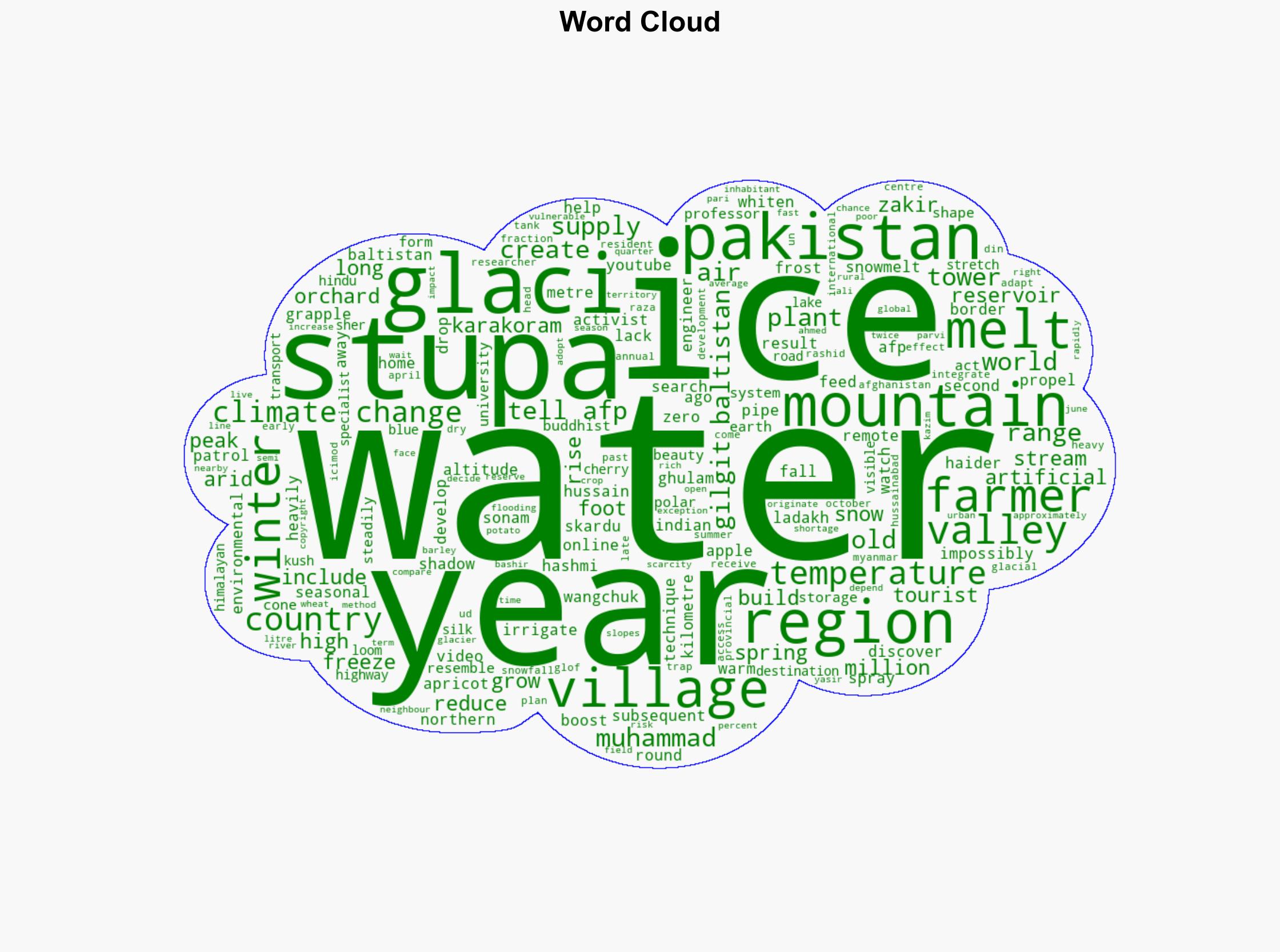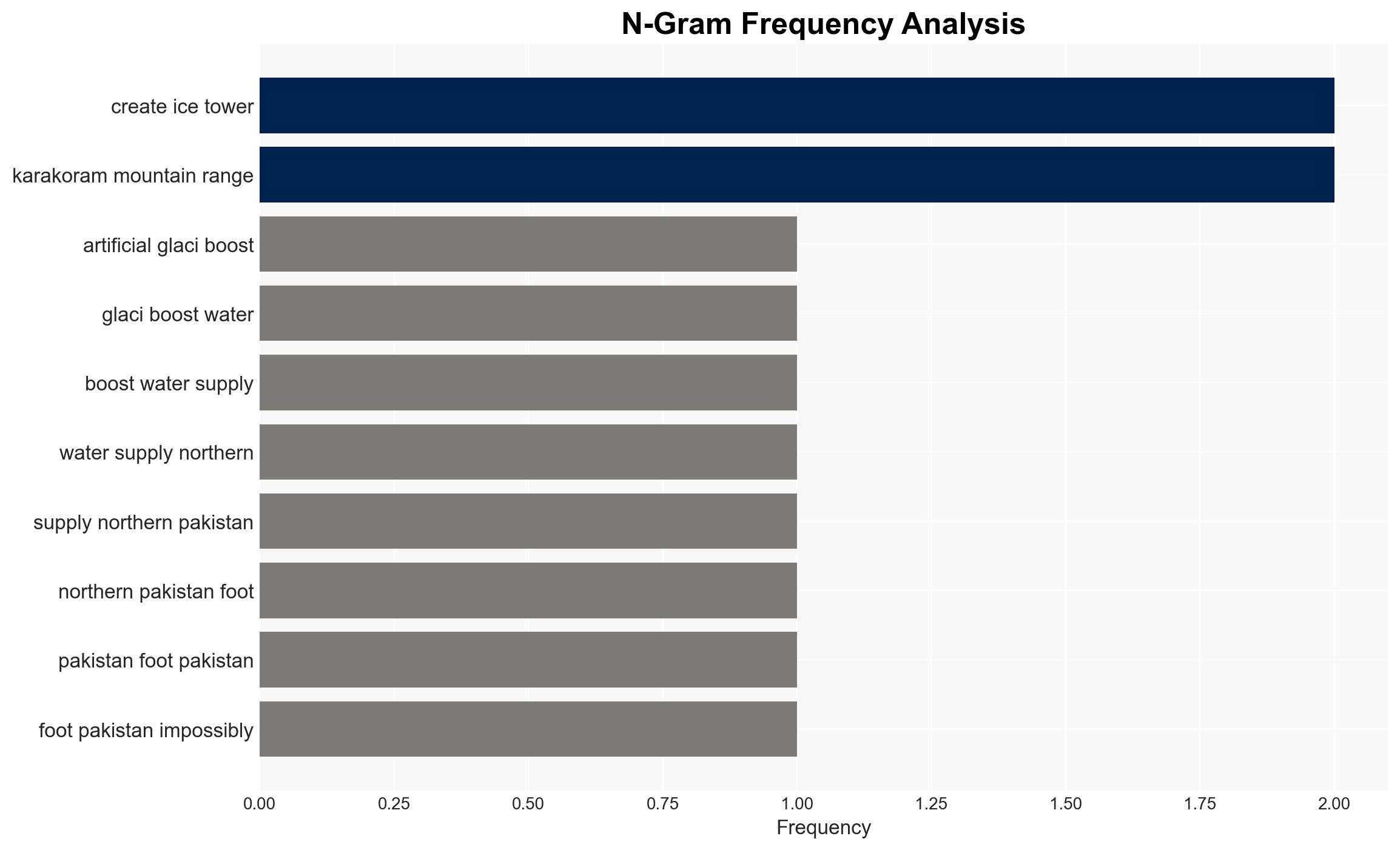Artificial Glaciers Boost Water Supply In Northern Pakistan – International Business Times
Published on: 2025-04-06
Intelligence Report: Artificial Glaciers Boost Water Supply In Northern Pakistan – International Business Times
1. BLUF (Bottom Line Up Front)
Artificial glaciers, also known as ice stupas, are being utilized in Northern Pakistan to address water scarcity exacerbated by climate change. This innovative approach, inspired by techniques developed in the Indian region of Ladakh, involves creating ice towers during winter to store water that melts in spring, providing a crucial water source for agriculture in the Gilgit-Baltistan region. The initiative has shown promise in mitigating water shortages, supporting local agriculture, and potentially reducing the impact of climate change on water resources.
2. Detailed Analysis
The following structured analytic techniques have been applied for this analysis:
General Analysis
The Gilgit-Baltistan region, home to some of the world’s highest peaks, faces significant water scarcity due to reduced snowfall and glacial melt. Farmers in the Skardu Valley have adopted the artificial glacier technique after learning from online resources. This method involves spraying water into the air during freezing temperatures to create ice towers, which store water for use during warmer months. The initiative has been locally driven, with residents building reservoirs and tanks to capture and store water. The technique has been effective in providing a sustainable water supply for agriculture, particularly for crops such as apples, apricots, potatoes, wheat, and barley.
3. Implications and Strategic Risks
The use of artificial glaciers presents several implications and strategic risks:
- Climate Change Adaptation: The technique offers a viable adaptation strategy to counteract water scarcity due to climate change, potentially serving as a model for other regions facing similar challenges.
- Regional Stability: Improved water availability can enhance agricultural productivity, contributing to regional stability and food security.
- Environmental Impact: While beneficial, the long-term environmental impact of artificial glaciers needs further study to ensure sustainability.
- National Security: Water scarcity poses a risk to national security, and innovative solutions like artificial glaciers can mitigate this risk by ensuring a stable water supply.
4. Recommendations and Outlook
Recommendations:
- Encourage further research and development of artificial glacier technology to optimize efficiency and minimize environmental impact.
- Promote knowledge sharing and collaboration between regions to expand the use of this technique in other water-scarce areas.
- Implement regulatory frameworks to support sustainable water management practices and protect water resources.
Outlook:
Best-case scenario: Widespread adoption of artificial glaciers leads to improved water security and agricultural productivity, fostering regional stability and economic growth.
Worst-case scenario: Environmental challenges or technical limitations hinder the effectiveness of artificial glaciers, leading to continued water scarcity and potential regional instability.
Most likely outcome: Gradual expansion and refinement of artificial glacier technology result in moderate improvements in water availability and agricultural outcomes.
5. Key Individuals and Entities
The report mentions significant individuals and organizations involved in the development and implementation of artificial glaciers:
- Ghulam Haider Hashmi
- Sonam Wangchuk
- Zakir Hussain Zakir
- Sher Muhammad
- Muhammad Raza
- Rashid Ud Din
- Ali Kazim
- Bashir Ahmed
- Yasir Parvi





